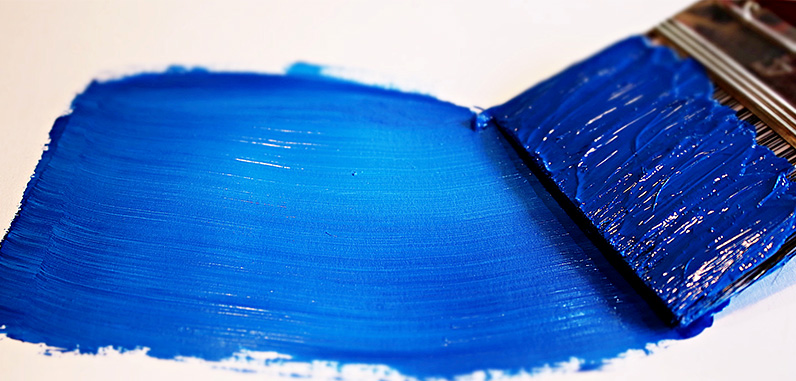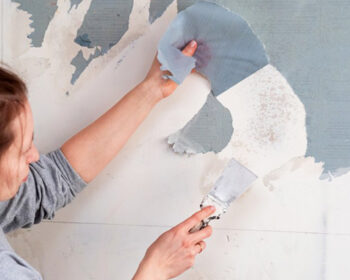
How to Store and Take Care of Your Paintbrushes
A high-quality paintbrush is an expensive precision tool that, if properly cared for, can last for many years. Learn various methods for cleaning a fresh paintbrush and how to preserve it both while using it and after the activity is finished.
Our house painter in Melbourne shared steps on how to choose and take care paint brushes. Let’s go over how to prevent paintbrush difficulties step by step.
Choosing an Affordable Paintbrush
Paintbrushes are not made equally. Trying to cut corners with a paintbrush can result in you spending more time and energy than is necessary, and it can also make your paint job look poor. Even yet, there are situations in which a cheap paintbrush might be suitable for tasks that would normally require a disposable brush.
For the application of glues and paint that won’t be a visible interior finish, cheap paint brushes should be use. Their construction and material are what make them less expensive.
- Bristles: Synthetic (nylon) bristles are found on low-cost brushes. If you spread them out with your fingers, you’ll notice that they are untapered and have a blunt end. This is a problem since a streaky paint job will result from the brush tip’s inability to hold paint. The bristles are also thicker and fewer in number.
- Foam brushes: Foam brushes are good for little touch-ups and for spreading glue when you don’t want to deal with the inconvenience of cleanup, but the finish will be relatively lousy and unsuitable for serious paint tasks. Foam brushes are excellent for applying touch-up clear wood treatments. But keep in mind that disposing of foam brushes contributes to the accumulation of non-biodegradable material in landfills.
- Ferrule: The ferrule, which is typically aluminium on less expensive brushes, is the metal strap that secures the bristles to the brush handle. The ferrule won’t fit snugly against the hardwood handle on these budget brushes. A cheap brush will have loose bristles that will become stuck to your paint job since the ferrule does not hold the bristles in place very well.
Choosing a Good Paintbrush
For interior painting using standard, ceramic, or other low VOC alternative paints, you should only use high-quality paint brushes. The type of paint being used and the object you are painting will determine the bristle type and brush style.
Using a high-quality paintbrush helps simplify and enhance the looks of any painting project. Your time spent climbing the ladder is justified. The way the brush is produced is what raises the price a little.
- Brush style: There are three common brush styles: “Wall,” “Trim,” and “Sash-Trim.” Wall brushes typically have flat bottoms and are between 7 cm and 15 cm in width. Trim brushes are also flat-bottomed but are typically 2.5 cm to 5 cm narrower and thinner. Sash-trim brushes are typically 2 cm or less wide and have an angled cut. The sash-trim brush is the finest value and most adaptable option for cutting-in or trim work.
- Bristles: A high-quality brush may have synthetic (polyester, nylon), genuine animal hair (hog or ox), or a combination of the two as its bristles. Use only natural bristles for paints that are oil-based. Natural bristles shouldn’t be used with water-based paint since they will deteriorate. For oil-based paints as well as latex-based paints, synthetic brushes are a good option. A high-quality brush will contain bristles that are different lengths, taper near the tip, and have fuzzy-looking tips (flagged), much like split ends on hair. This style produces a smooth paint job by allowing the brush tip to hold paint.
- Ferrule: A high-quality brush would typically have a ferrule made of non-corrosive metal that is tidy and tight-fitting, securely fastening the bristles to the brush handle.
Storing While Pausing in Work
There will be a little magnet on the side of the paint pail if you’re using one like the Handy Paint Pail. This small convenience allows the ferrule of the brush to adhere to the magnet, keeping the bristles submerged in paint throughout your break.
The brush can be slipped into a separate compartment in some other pails to keep it moist while you pause. Find a means to leave the brush bristles in the paint if you don’t have a paint pail with these features or are working from a paint can.
Storing for Long Interruptions
Wrapping the bristles and ferrule with plastic wrap is a simple approach to keep the brush fresh during intermediate storage (a few hours or overnight). Plastic wrap delivers better results than covering the bush in aluminium foil, which is occasionally advised. It is inexpensive, simple to use, and creates a nice airtight barrier.
Getting a glass jar or paint bucket and filling it with the correct solvent for the paint you’re using is another method, but it takes a little more work. For latex paint, this would be water, and for oil-based paint, paint thinner.
Take a 1-foot stretch of blue painter’s tape, masking tape, or duct tape. After that, lean the brush against the container or bucket and extend it into the cleaner until the bristles are completely submerged. By wrapping the tape around the brush handle and pressing the ends of the tape on the opposite sides of the jar or bucket, you can attach the brush to it.
Keeping for a Long Period of Time
You want to store your high-quality paintbrush now that your painting project is over. This is what you do:
- First, remove any extra paint from the brush. To get rid of any significant amounts of paint, scrape the brush around the edge of the paint can.
- Once the brush is essentially dry, use it to paint sheets of newspaper to use up the majority of the leftover paint.
- After washing the brush with the proper solvent, remove any residual paint. For latex paint, this would require water, and for oil-based paint, paint thinner.
- Dispose of the solvent in an environmentally friendly way.
- After the brush has been cleansed of paint, thoroughly rinse it with soap and water to remove any leftover paint or solvent.
- After aligning the bristles with your hand a few times, reshape the brush to give it a brand-new appearance. A paintbrush comb, which may be found in home improvement and paint supply stores, is a useful tool for this.
- Use tape or a rubber band to secure the brush after wrapping it in a piece of paper or a piece of newspaper.





